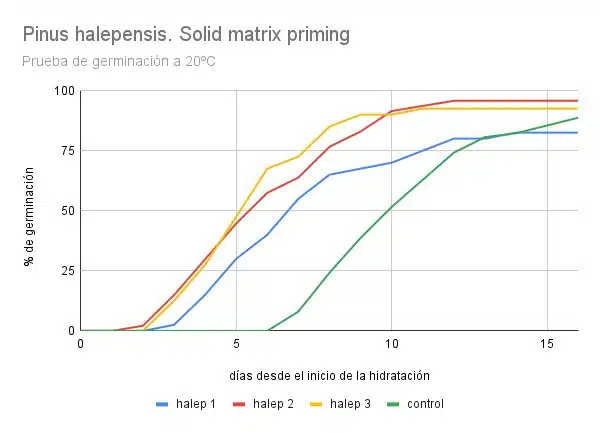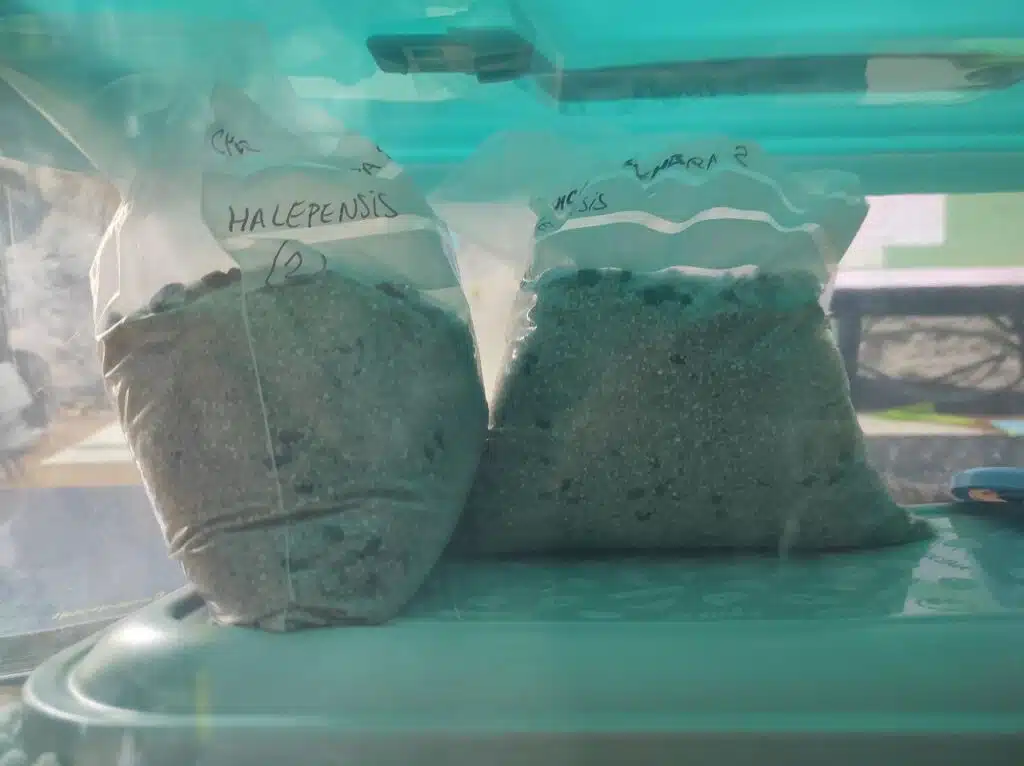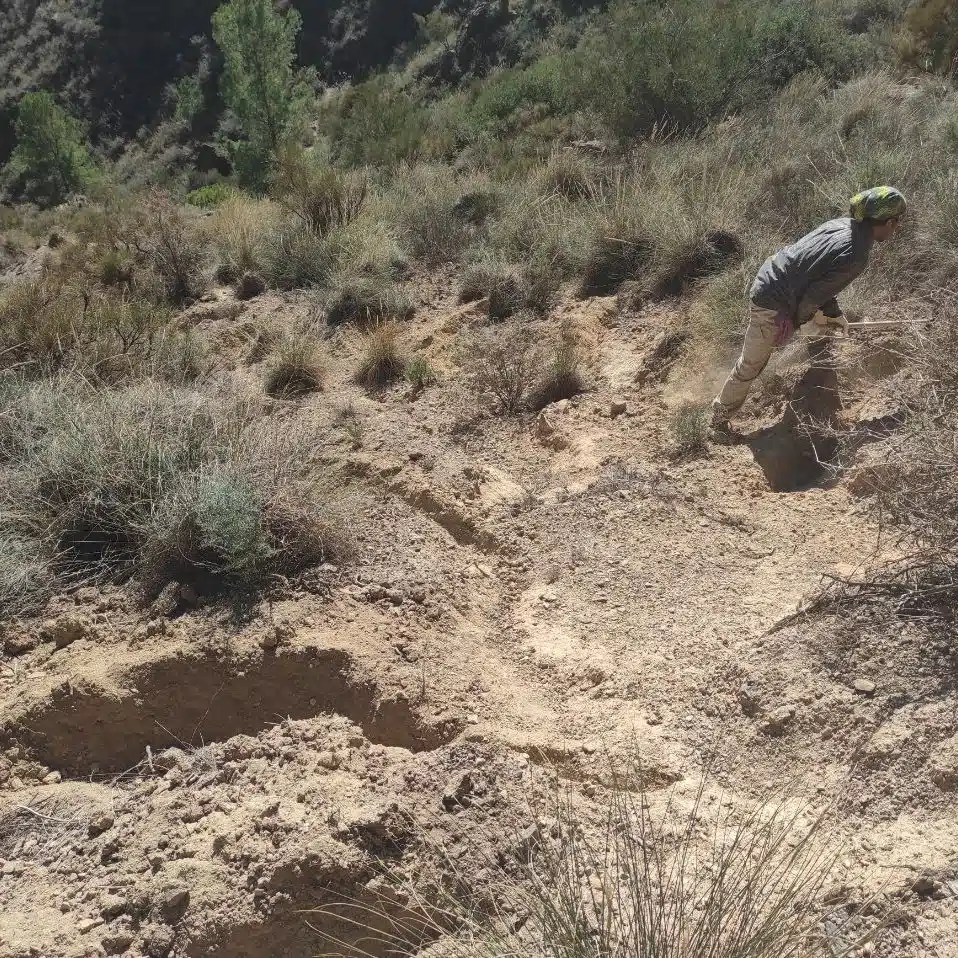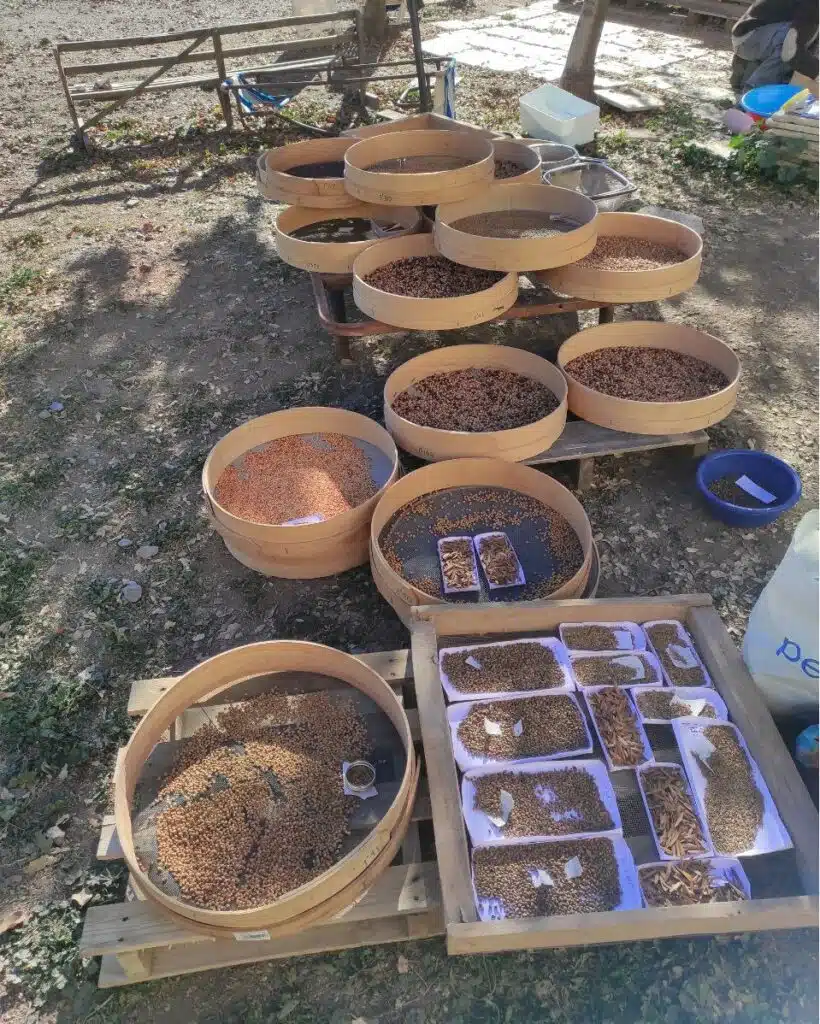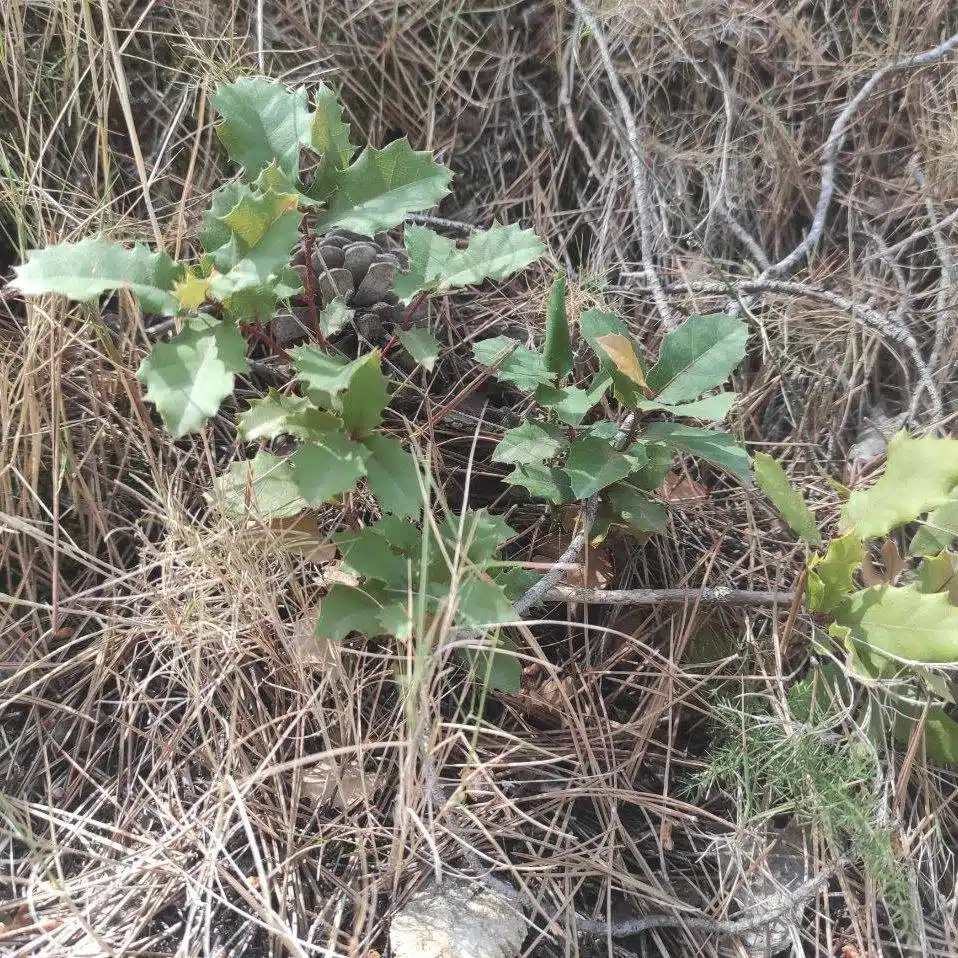At Semillistas we continue to explore ways to improve the efficiency of our plantings and increase the survival rates of the trees we plant. On this occasion, we are applying a treatment called Solid Matrix Priming to Pinus halepensis, a key species in the reforestation of Mediterranean ecosystems.
This treatment consists of placing the seeds in a low-density polyethylene bag with sand and a controlled amount of water. For 17 to 25 days, the seeds remain in this environment, where their hydration is carefully regulated. Once the process is complete, the seeds are separated from the sand, cleaned, dried and stored until planting time.
Why are we so interested in this method? Without treatment, Pinus halepensis seeds take 7 to 16 days to germinate. However, with Solid Matrix Priming, this time is reduced to 3-9 days.
In addition, the major advantage for our methodology is that this treatment allows halepensis to germinate even at low temperatures. Without Priming, if the temperature drops below 10°C, the seeds simply do not germinate. But when they have gone through this treatment, they can germinate at temperatures between 5 and 15°C, which is crucial for our sowings, as we usually do them in autumn and winter.
This means that, instead of waiting until spring to germinate, treated seeds can germinate in the middle of winter. Thus, the seedlings have more time to develop their root system before facing their first summer, which increases their chances of survival in drought conditions.
Applying science and technology to reforestation allows us to improve our methodologies and ensure that each seed planted has a better chance of developing into a strong, resilient tree. We continue to learn and experiment to bring life back to degraded ecosystems.
